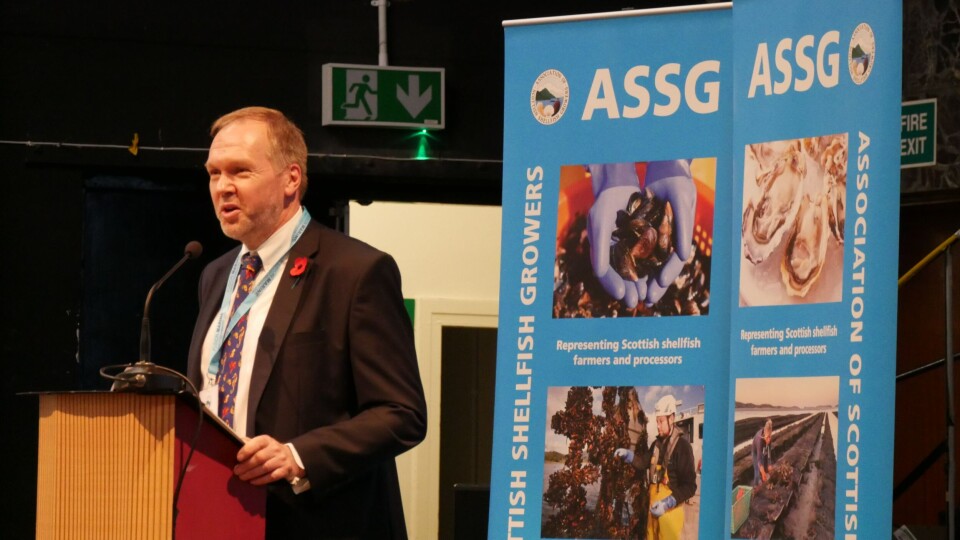
Shellfish growers flex their mussels in Oban
Scottish Environment Secretary Roseanna Cunningham will today open what promises to be a varied and international Association of Scottish Shellfish Growers (ASSG) annual conference in Oban.
Cunningham will be speaking about the importance of protecting and enhancing Scotland’s water environment, new permitted development rights for shellfish farms, and plans for a real-time water classification pilot in Shetland in 2019.
Speakers on day one of the two-day event include Baukje de Roos from the Rowett Institute, Aberdeen, talking about the role shellfish can play in the health of the nation, and Morven Robertson from the Blue Marine Foundation explaining the environmental benefits of native oyster production.
Seed supply
There will also be several speakers from overseas. Asa Strand from Gothenberg University will talk about Swedish mussel production and seed supply, Martina Ferriera Novio from Spain’s National Association of Manufacturers of Canned Fish and Shellfish (ANFACO) in Vigo will talk about the Spanish mussel industry, and Australian Col Bridges will look at oyster developments and technology.
Tomorrow’s proceedings begin with Amanda Bryan, chair of Crown Estate Scotland, talking about the organisation’s role as landlord in the development of marine industries.
A session on environment and stewardship includes Adam Hughes from the SAMS/UHI aquaculture hub talking about the wider natural capital benefits of shellfish production, and Nicolas Chopin from Ireland’s seafood development agency Bord Iascaigh Mhara (BIM) talking about the management of Irish mussel seed stock.
Water quality
Mathew Service from the agri-food and biosciences institute AFBINI in Northern Ireland, will examine the practical role of shellfish in maintaining coastal water quality.
The final session includes Richard Slaski, executive director of the Scottish Aquaculture Research Forum (SARF) talking about shellfish research and the outlook for future funding, and Michael Tait from the Stepping Stone hatchery project in Shetland outlining the constraints and opportunities for mussel seed.
The annual ‘Best Scottish Shellfish’ competition, hosted by the ASSG and sponsored by Highlands and Islands Enterprise (HIE), will be judged today by shellfish farmer and industry journalist Nicki Holmyard and her team – local seafood entrepreneur John Ogden, fish farming journalist Jenny Hjul, and head of food and drink policy for HIE Elaine Jamieson.
The results will be announced at tonight’s annual dinner at the Fishouse Restaurant, and the winners presented with specially designed plates from Richard Bramble.
The conference, at the Corran Halls, also features a trade exhibition.
ASSG executive director Nick Lake said: “Our annual conference is always well attended and brings shellfish farmers and allied industries into the heart of shellfish farming country for two days of lively dialogue, discussion and debate.
“This also presents the opportunity for policy makers and government to engage with what is a rural and expanding sector with proven potential to contribute to the economic success of coastal communities and safeguard the marine environment.”























































